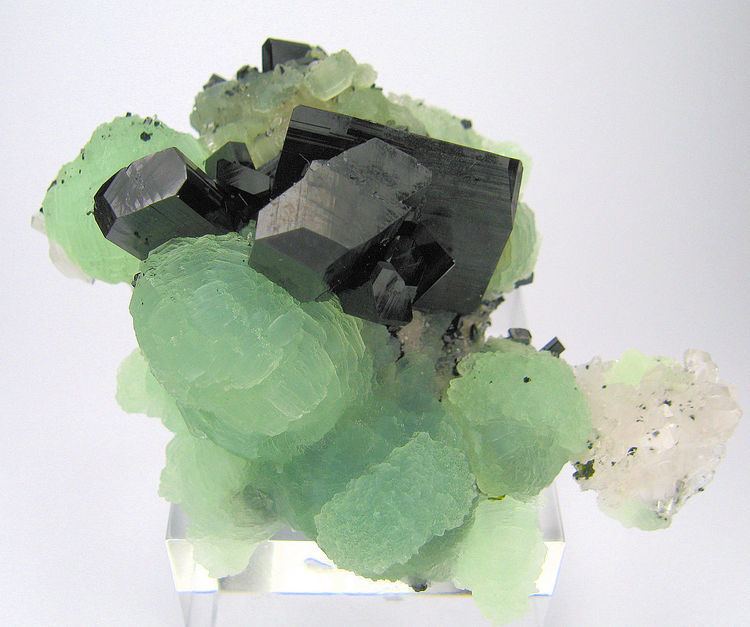Category Inosilicate Strunz classification 9.DK.05 Space group P1 | Formula(repeating unit) Ca2(Fe,Mn)FeSi5O14(OH) Crystal system Triclinic | |
 | ||
Crystal class Pinacoidal (1)(same H-M symbol) | ||
Babingtonite is a calcium iron manganese inosilicate mineral with the formula Ca2(Fe,Mn)FeSi5O14(OH). It is unusual in that iron(III) completely replaces the aluminium so typical of silicate minerals. It is a very dark green to black translucent (in thin crystals or splinters) mineral crystallizing in the triclinic system with typically radial short prismatic clusters and druzy coatings. It occurs with zeolite minerals in cavities in volcanic rocks. Babingtonite contains both iron(II) and iron(III) and shows weak magnetism. It has a Mohs hardness of 5.5 to 6 and a specific gravity of 3.3.
It was first described in 1824 from samples from Arendal, Aust-Agder, Norway (which is its type locality) and was named after the Irish physician and mineralogist William Babington (1757–1833).
It is the official mineral (mineral emblem) of the Commonwealth of Massachusetts.
